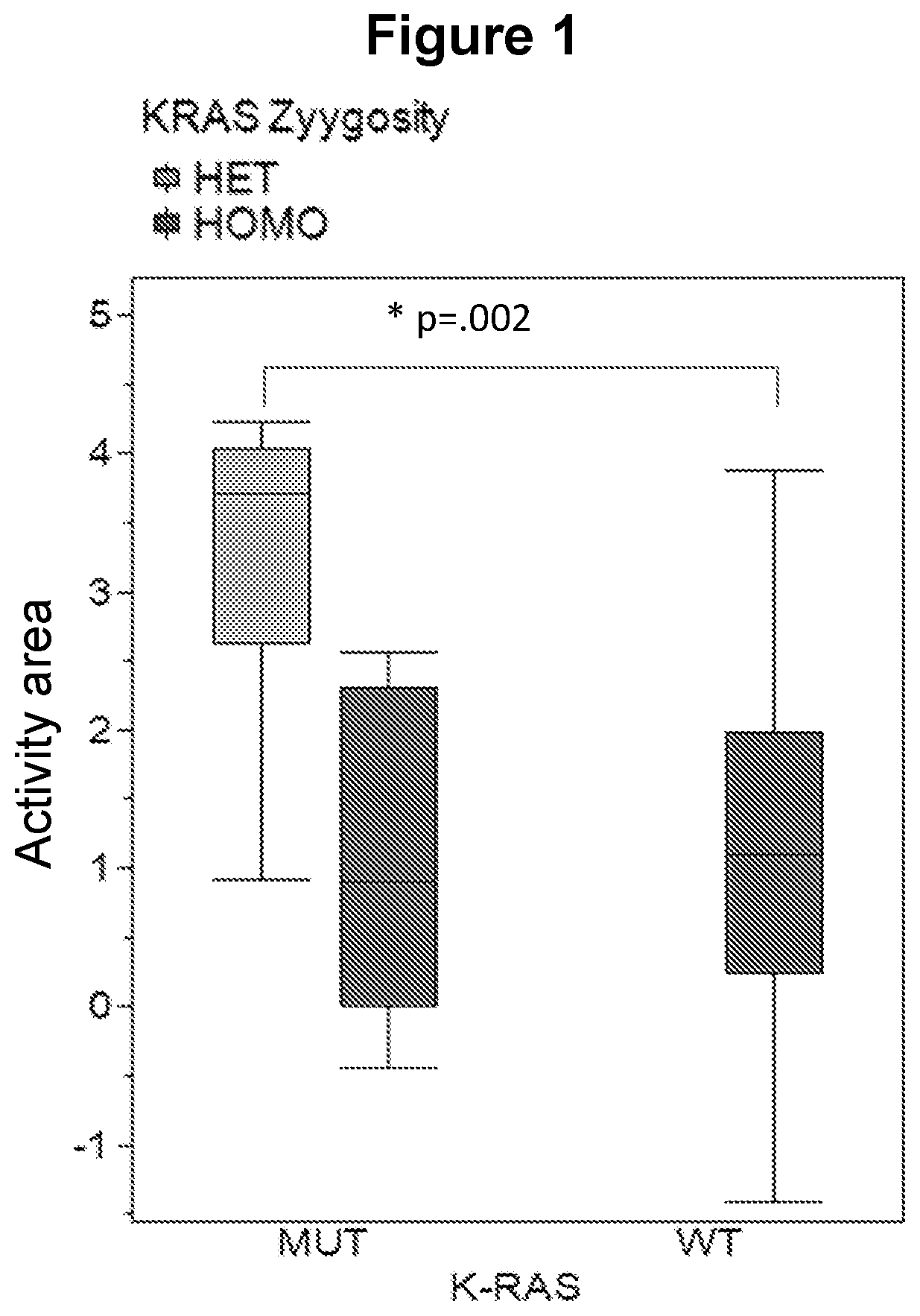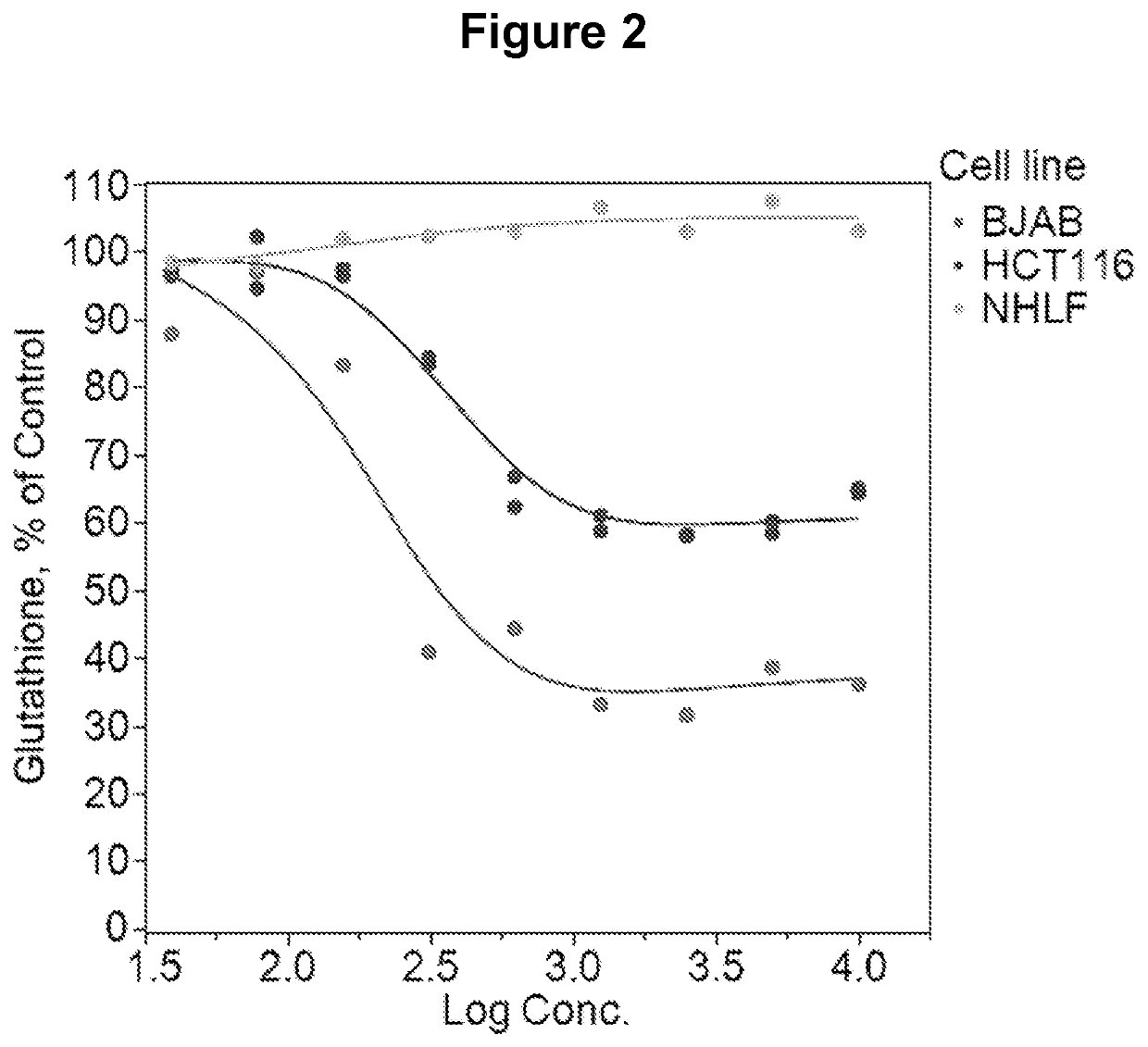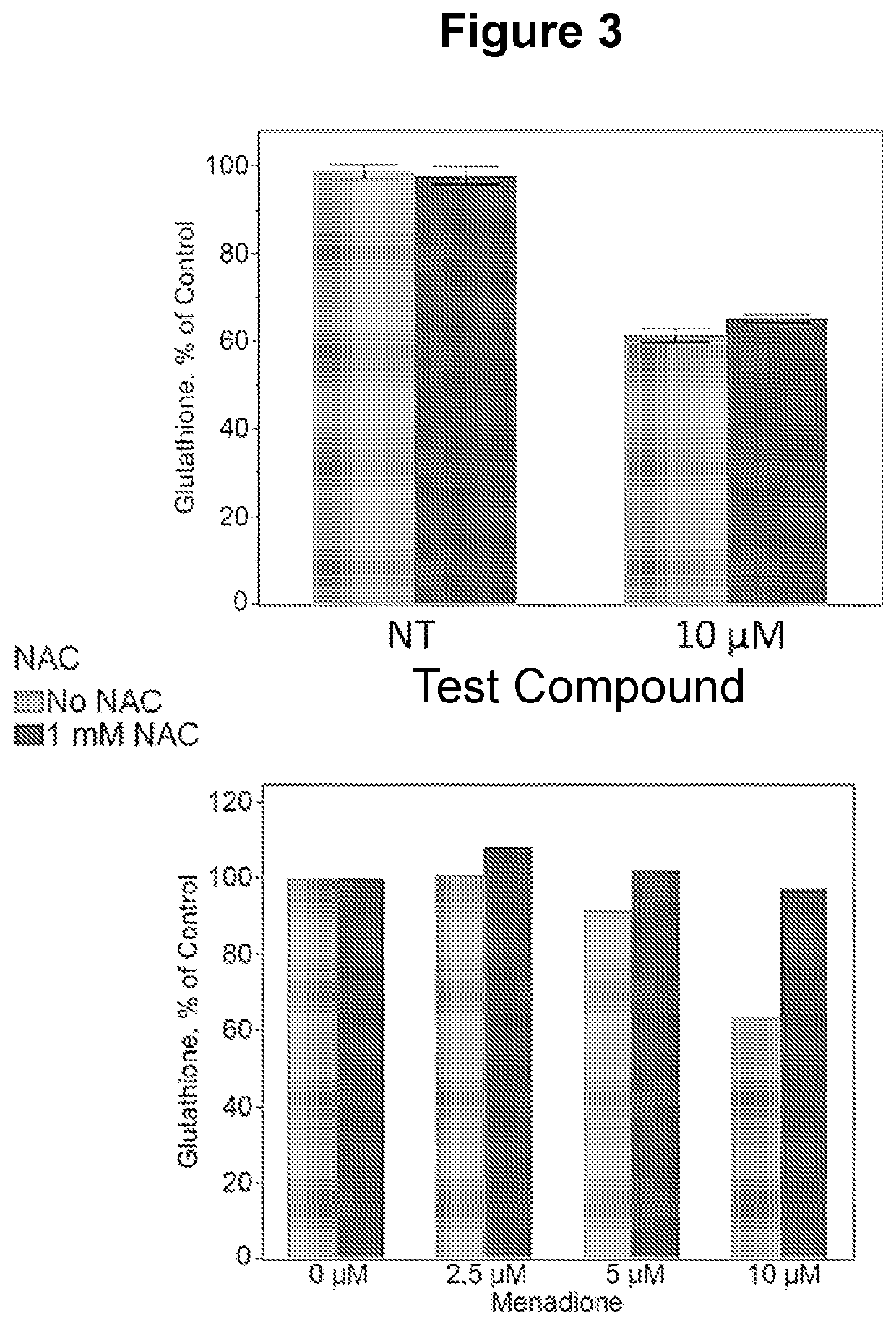Methods of Using Substituted Pyrazole and Pyrazole Compounds and for Treatment of Hyperproliferative Diseases
a technology of pyrazole and pyrazole compounds, which is applied in the field of compounds, can solve the problems of nutrient deprived environment, many cancers remain unfavorable for specific cancers, and challenge the cell and its ability to maintain metabolic homeostasis,
- Summary
- Abstract
- Description
- Claims
- Application Information
AI Technical Summary
Benefits of technology
Problems solved by technology
Method used
Image
Examples
example 1
r Activity
[0660]A panel of 96 tumor and 3 normal cell lines were tested for sensitivity to the test compound. The cell lines were cultured in standard media and pipetted into 96-well plates at the required plating densities. The cells were acclimated for 24 hours prior to compound testing. Compound was prepared as a stock of 20 mM in DMSO. To prepare dose response curves compound was serially diluted in DMSO and dispensed into the plate wells using a Tecan D300e digital dispenser. The final DMSO concentration was 0.15%. After 72 hours of incubation cell number was determined using the CellTiter-Glo® (Promega) protocol. In this assay, ATP is measured as a surrogate of cell number. The activity of the compound is determined by comparing untreated cells with treated cells and calculating the % of signal retained. Compound activity is measured as an EC50 of maximum level of efficacy and the two are used to compute an activity area curve.
[0661]Out of the 96 tumor cell lines, 39 tumors (4...
example 2
RAS on Activity
[0663]Next, the genotype of the KRAS allele for the solid tumor lines was determined. Using the COSMIC database, KRAS genotype and zygosity (homozygous or heterozygous) could be determined for 74 of 77 solid tumor cell lines (Table 3).
TABLE 3Tumor responsiveness with respect to KRAS genotypeNumberKRASResponsiveResponsivenessgenotypeNY(%)MUT5965NA2133WT481220
Only 20% of the cell types having the wild-type KRAS allele were responsive to the test compound. In contrast, 65% of the cell types harboring a mutation in the KRAS allele were responsive to the test compound. When the analysis is extended to whether the KRAS allele is homozygous or heterozygous there is a distinct split in the outcome (Table 4). Cell lines bearing a heterozygous mutation in the KRAS allele showed greatest responsiveness.
TABLE 4Tumor responsiveness with respect to KRAS zygosityKRAS MUTResponsivenessNumber ResponsiveNY(%)HET1787.5HOMO4230 NA01
[0664]A final analysis of the role of KRAS on the respo...
example 3
e Analysis of Compound-Treated Cells
[0670]HCT116 cells (3×105 cells) grown in McCoy media supplemented with heat inactivated fetal bovine serum were plated in 6-well plates and allowed to adhere overnight. Duplicate samples were prepared by treating cells for 24 hours with serum starvation (0% FBS), 5 μM test compound or DMSO vehicle control. Two hours prior to harvest, replicating DNA was labeled with EdU (5-Ethynyl-2′-deoxyuridine, Thermo Fisher) at 10 μM. Both adherent and floating cells were harvested and fixed in a solution of 4% paraformaldehyde in PBS for 15 minutes at room temperature. Next, cells were permeabilized in a solution of 0.25% v / v triton X-100 / 0.5% BSA / PBS for 20 minutes at room temperature. This was followed by click reaction with OG488-Azide to detect EdU incorporation as follows: cells were incubated for 30 minutes in a reaction mixture containing 100 mM Tris-HCl pH 7.6, 4 mM CuSO4, 10 μM OG488-azide, and 100 mM ascorbic acid. Excess reagent was removed by rep...
PUM
| Property | Measurement | Unit |
|---|---|---|
| Fraction | aaaaa | aaaaa |
| Fraction | aaaaa | aaaaa |
| Fraction | aaaaa | aaaaa |
Abstract
Description
Claims
Application Information
 Login to View More
Login to View More - R&D
- Intellectual Property
- Life Sciences
- Materials
- Tech Scout
- Unparalleled Data Quality
- Higher Quality Content
- 60% Fewer Hallucinations
Browse by: Latest US Patents, China's latest patents, Technical Efficacy Thesaurus, Application Domain, Technology Topic, Popular Technical Reports.
© 2025 PatSnap. All rights reserved.Legal|Privacy policy|Modern Slavery Act Transparency Statement|Sitemap|About US| Contact US: help@patsnap.com



